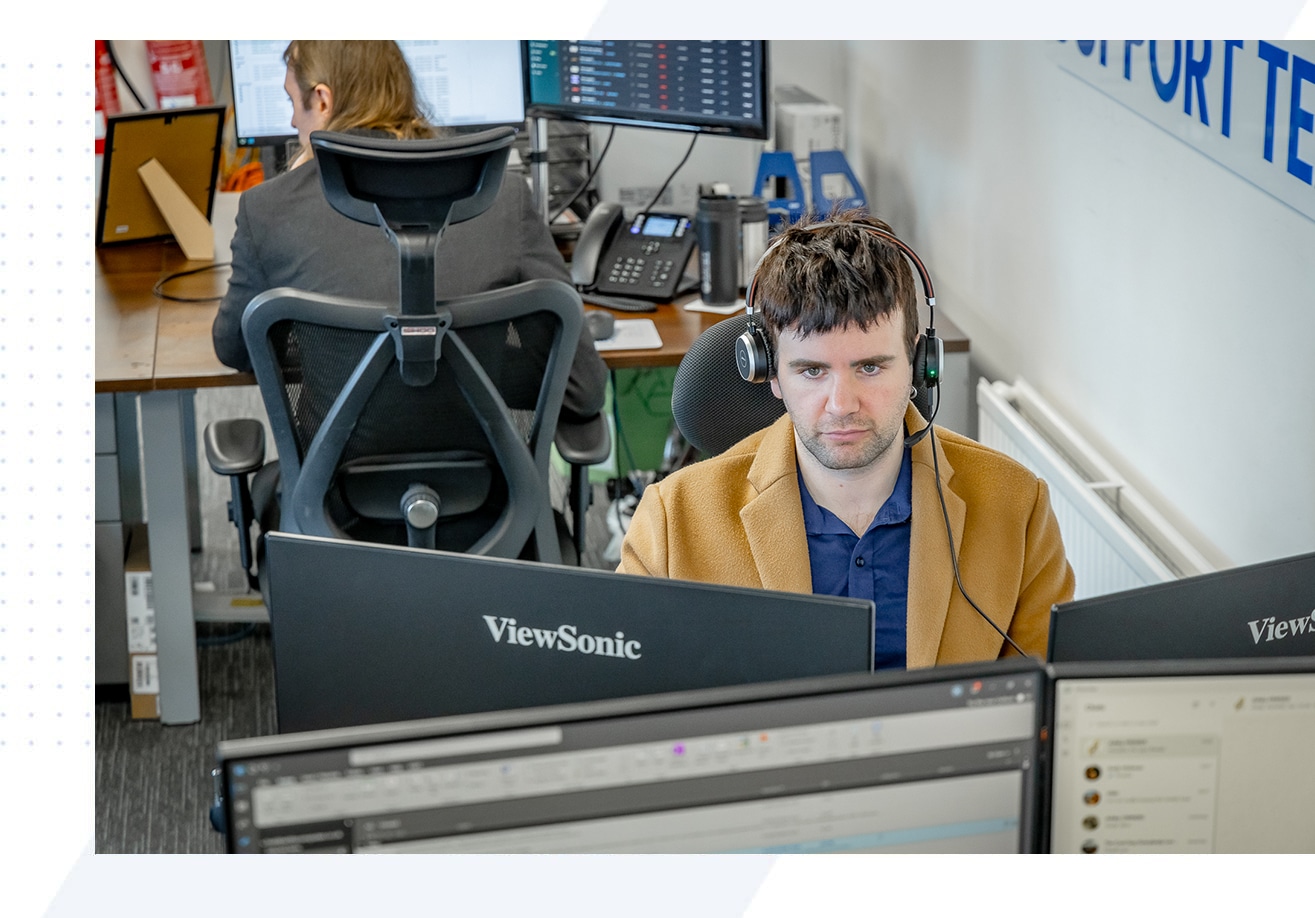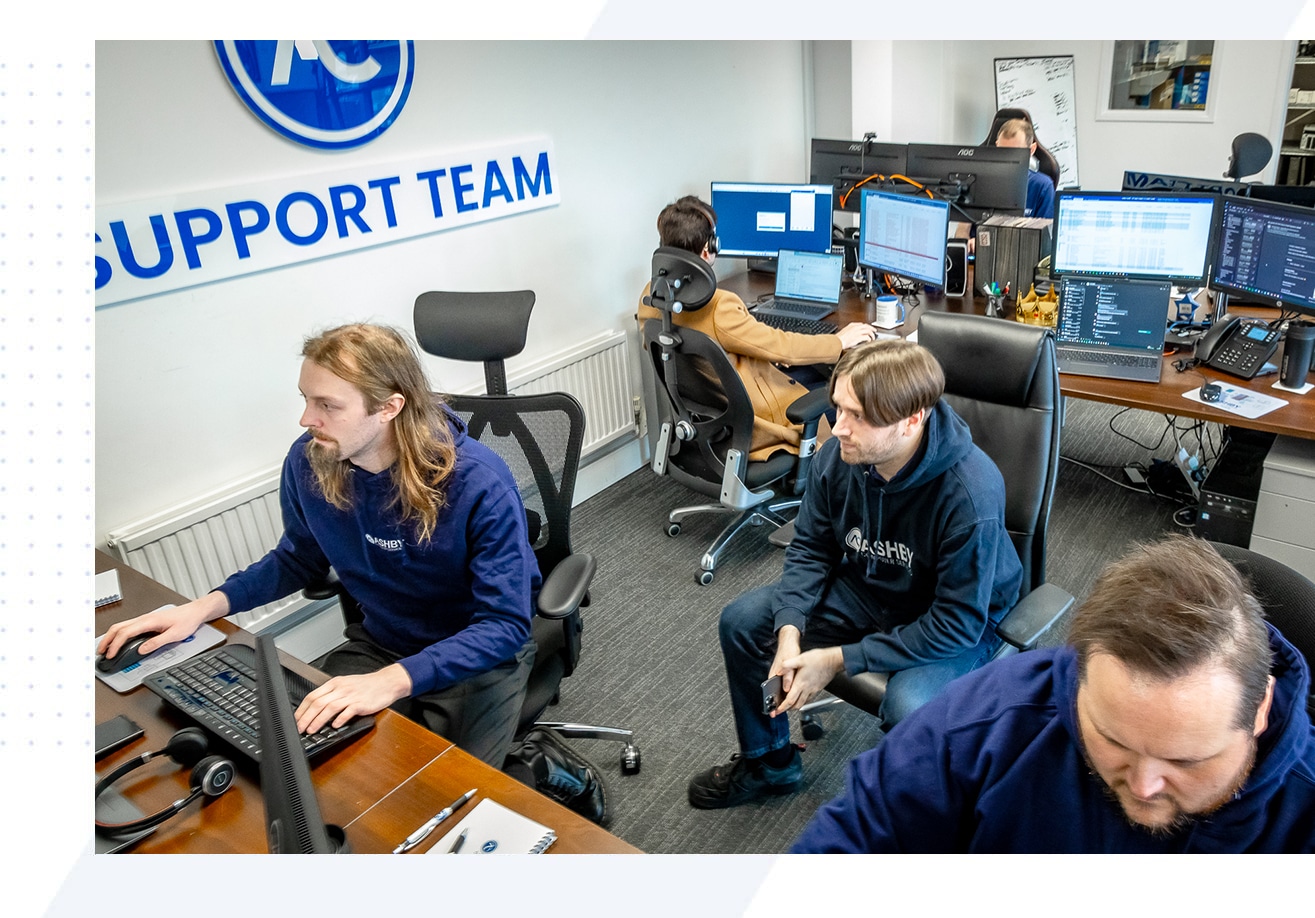Cybersecurity Trends for 2025 and Beyond: What Northamptonshire Businesses Need to Know

Reviewing 2024’s Cybersecurity Shifts
Before we look forward, let’s take a moment to reflect on key cybersecurity developments from 2024:
1. The Shift to Passkeys
Traditional passwords are gradually being replaced by passkeys, which leverage FIDO technology for improved security. Over the past year:
- A major password management company reported 4.2 million passkeys saved in their platform.
- 1 in 3 users now stores and uses passkeys for authentication.
- More companies are adopting this technology to reduce password-related vulnerabilities.
2. AI-Generated Phishing Attacks
Generative AI has made phishing emails more convincing, increasing the risk of cyber fraud:
- AI-driven phishing messages appear more authentic and personalized.
- Attackers use publicly available information to tailor their messages, making them highly believable.
- Traditional phishing detection methods, such as spotting grammatical errors, are no longer reliable.
3. The Growing Threat of Deepfakes
Deepfake scams gained traction in 2024, demonstrating their potential for financial and political manipulation:
- A deepfake impersonating a CFO led to a fraudulent $25 million transfer.
- A deepfake robocall mimicking Joe Biden’s voice attempted to mislead voters.
- Deepfake fraud is becoming a key concern for businesses and governments alike.
4. The Challenge of AI Hallucinations
AI-powered tools still struggle with accuracy, making misinformation a persistent problem:
- AI chatbots have provided incorrect data, leading to serious errors in decision-making.
- The cybersecurity sector must account for these inconsistencies when deploying AI-driven security measures.
5. Securing AI Deployments
With AI adoption increasing, securing AI systems is a top priority. Many Northamptonshire businesses are now considering how to:
- Protect AI models from unauthorized use.
- Prevent sensitive data exposure through AI-integrated platforms.
- Address AI vulnerabilities that could be exploited by cybercriminals.
Cybersecurity Predictions for 2025 and Beyond
Many of these trends will continue evolving, bringing both risks and opportunities. Here’s what Northamptonshire businesses should prepare for:
1. The Rise of Shadow AI
Unauthorized AI use within organizations will be a growing challenge:
- Employees may deploy AI tools without IT approval, creating security gaps.
- AI-powered apps and mobile OS features could increase the risk of data leaks.
- Cybercriminals may exploit unmonitored AI applications to spread misinformation.
2. Escalating Deepfake Threats
Deepfake technology is advancing, raising serious concerns for businesses and legal institutions:
- Criminals will use deepfakes to impersonate executives and defraud companies.
- Governments must prepare for AI-driven political misinformation campaigns.
- Legal experts must determine how to verify the authenticity of digital evidence.
3. AI-Generated Malware and Cyberattacks
Cybercriminals are leveraging AI to develop sophisticated malware:
- A study found that AI chatbots could generate exploit code 87% of the time.
- Large online retailers reported a sevenfold increase in AI-assisted cyberattacks over six months.
- Businesses need to invest in AI-driven threat detection to stay ahead.
4. Expanding Attack Surfaces
The digital landscape continues to grow, increasing vulnerabilities:
- Unapproved AI tools create new entry points for hackers.
- AI-driven IT infrastructure can become a direct target for cybercriminals.
- Prompt injection attacks remain a significant concern, allowing hackers to manipulate AI systems.
5. Using AI for Cyber Defense
AI isn’t just a threat—it’s also a powerful tool for cybersecurity:
- AI-driven security analysis can automate threat detection and response.
- Cybersecurity chatbots using Retrieval-Augmented Generation (RAG) provide reliable, fact-based insights.
- AI-powered threat intelligence systems help businesses proactively defend against attacks.
6. Preparing for the Quantum Computing Era
Quantum computing will soon challenge traditional encryption methods. Businesses must begin adopting quantum-safe cryptographic solutions now to protect sensitive data in the future:
- Some attackers are already using “Harvest Now, Decrypt Later” tactics—stealing encrypted data today with the intent to decrypt it once quantum technology advances.
- Governments and enterprises must transition to post-quantum cryptographic standards.
How Northamptonshire Businesses Can Stay Ahead
With cyber threats becoming more sophisticated, local businesses must take proactive steps to safeguard their operations:
- Implement AI-driven cybersecurity solutions to detect and respond to threats in real time.
- Educate employees on recognizing AI-powered phishing attacks and deepfake scams.
- Strengthen authentication by transitioning from passwords to passkeys.
- Adopt quantum-safe encryption to prepare for future cyber risks.
- Regularly review IT security policies to address emerging threats and AI vulnerabilities.
Cybersecurity is no longer just an IT issue—it’s a business-critical priority. By staying informed and adopting the latest security measures, Northamptonshire companies can protect their assets and maintain trust with their customers.
Get Cyber Secure Today
Is your business ready for the cybersecurity challenges of 2025? Contact our team today to discuss tailored security solutions that keep your Northamptonshire business protected.



















